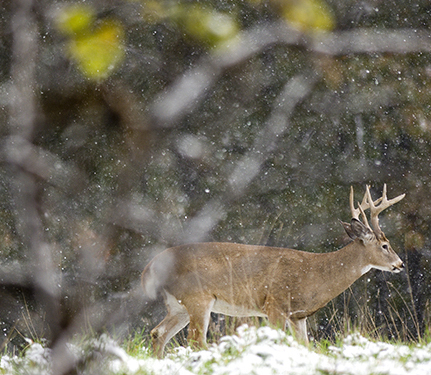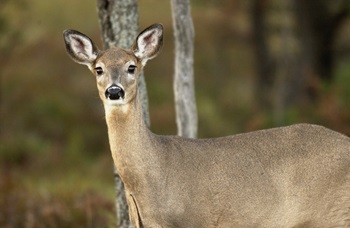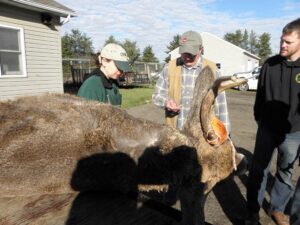Bovine TB Appears to have Stabilized
March 9, 2009
Contact Steve Schmitt 517 336-5030 Mary Dettloff 517-335-3012
TB Prevalence Increases Slightly in Deer Herd in Core Area of
Infection
The incidence of bovine tuberculosis (TB) in the deer herd in the core
area of infection in northeastern Lower Michigan – Deer Management Unit
452 – increased slightly in 2008, the Department of Natural Resources
announced last week at the Natural Resources Commission meeting.
DMU 452, which is located in Montmorency, Alpena, Oscoda and Alcona
counties, saw the incidence in deer testing positive for TB increase to
1.8 percent from 1.4 percent in 2007. Although the incidence is still
declining over the long term, the trend for rate of infection during the
last six years is only changing slightly on an annual basis.
“We have brought the prevalence of TB down from 1995, but it appears
to be stabilizing at this level during recent years,” explained DNR
Wildlife Veterinarian Steve Schmitt. “We may have lowered it as far as
we can with our current strategy.”
The DNR’s strategy has been to ban feeding and baiting in the
northeastern Lower Peninsula and to reduce the deer herd, by
liberalizing the availability of antlerless deer licenses. The bait and
feed ban has been extended to include the entire Lower Peninsula
following the discovery of a deer with chronic wasting disease in a
privately-owned deer herd in Kent County last August.
Overall, the DNR tested 16,260 deer for TB in 2008. Of those, 36 were
positive. Among TB-positive deer, 34 came from the four-county area, one
from Presque Isle County and one from Iosco County.
Intensive testing in Shiawassee County, where a TB-positive deer was
found in 2007, and six surrounding counties did not turn up any
TB-positive deer, Schmitt said.





